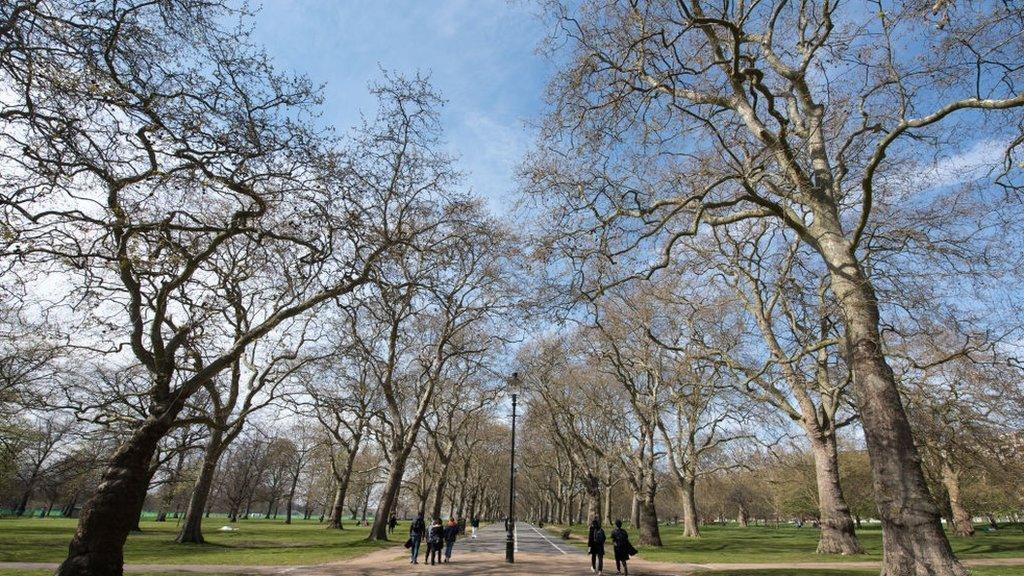Climate change is putting city tree survival at risk
- Published

Climate change is putting trees in cities and towns at serious risk, according to a new study.
More than half of tree species in cities studied in the Global Tree Inventory by researchers are already under threat as the weather is becoming warmer and drier.
By 2050, this risk is expected to rise for two thirds of trees in streets and parks.
Scientists are calling for city - or urban - trees to be better protected and for special 'drought-resistant' varieties to be planted.
Which trees are under threat and why?
Trees provide shade and cooler temperatures in cities but now they're at risk
Oak, maple, poplar, elm, pine and chestnut trees are among more than a thousand species at risk.
Manuel Esperon-Rodriguez and his team at Western Sydney University in Australia studied a database of more than 4,000 different trees and shrubs in 164 cities across the world.
In the UK researchers looked at five cities: Belfast, Birmingham, Bristol, London and York, with trees in York, London and Birmingham expected to be amongst the worst affected in the future.
Trees in tropical countries like India, Niger, Nigeria and Togo are particularly vulnerable to climate change.
Many trees in urban areas are already stressed because of climate change, and as the planet gets warmer and drier, the number of species at risk is expected to increase.
The study has been published in the Nature Climate Change journal.
Trees make cities more comfortable places to be with their cooling effect - they provide shade when it's hot and cool the air by releasing water vapour from their leaves
Trees provide habitats for wildlife like birds and insects, which is important for our ecosystem
They reduce air pollution by absorbing carbon dioxide from the atmosphere
In towns and cities trees help to prevent flooding by absorbing rain water
- Published5 August 2020
- Published26 January 2021
- Published27 May 2023
